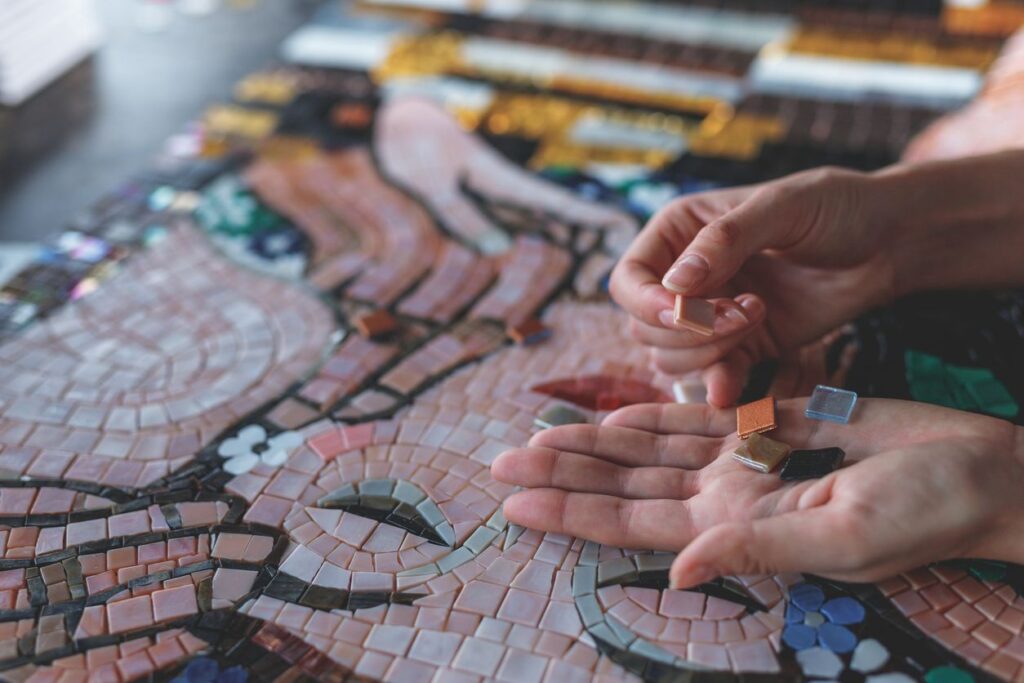Crafting can be fun, relaxing, and engaging for everyone, but it becomes even more important for people dealing with neurodegenerative disorders.
The best kinds of crafts for people with Parkinson’s are those that bring with them flexible expectations, sensory feedback, and the chance to adapt as you go. It doesn’t matter if your loved one is an experienced artist or just looking to explore something new; a few accessible activities can support their abilities, reduce stress, and spark joy all along the way.
Hands-On Art Activities for Parkinson’s Patients
Taking a hands-on approach can make a world of difference.
Getting those hands moving can help improve fine motor skills and dexterity, which are often impacted by the disease. These focused, repetitive motions, involved in many crafts, can help reduce tremors and improve coordination. Equally importantly, exercising creativity can be a massive boost to a patient’s overall mood, and whether it’s in a clinical setting or through at-home care, that’s always a top priority.
Modeling With Air-Dry Clay
Modeling with clay can be an excellent, low-stress method of self-expression for anyone, but especially those with Parkinson’s disease. Much like a stress ball, the tactile response from working with clay can be soothing and grounding during moments of stress or frustration, and best of all, there’s no right or wrong way to shape the material, making it easy to enjoy the process without focusing too much on precision.
Air-dry clay can not only make the setup and cleanup process easier, but it can also improve the overall experience. Wet clay tends to be more finicky. Waiting for a kiln can stretch the project across days, and even a small bubble could cause a piece to crack during firing.
That’s why we recommend air-dry alternatives that simplify the activity and keep everything contained to a single session. Choose vibrant colors to create pieces that dry quickly, and let your loved one enjoy their finished creation with family and friends that very same day.
Mosaic Art With Large Tiles

Mosaic art can be both engaging and forgiving, particularly for those living with Parkinson’s.
It doesn’t demand precision, and in fact, some of its charm lies in its flexibility. If a piece lands slightly off, that shift can become part of the design itself. It’s easy to adapt and move with the work as it develops, making it well adapted to Parkinson’s patients who benefit from a more relaxed approach.
Remember that the focus with mosaics is on artistic expression, not rigid perfection.
All you need to get started is some plaster, a baseboard, tiles, and a little imagination. To make things even easier, we advise you to choose large pieces of tile with rounded edges. These are more comfortable to grip and reduce the risk of accidental scratches or snags.
Collage Making and Scrapbooking
Collage making, just like mosaics, is easy and relaxing, but there’s another layer that makes it especially helpful for loved ones with Parkinson’s.
Scrapbooking and collage making double as a memory exercise. Picking photos, quotes, magazine clippings, and small keepsakes taps into personal history and encourages conversation, focus, and emotional recall.
You can even create collaborative projects with your loved one, helping to build a family scrapbook or memory collage together. It’s a project you’ll both enjoy in the moment and treasure for years to come, all while vitalizing the mind in a fun, cooperative activity.
More Craft Activities for Parkinson’s Patients
Get in the fold with origami.
A bone folder (that’s a small tool used to make crisp, clean folds) and a non-slip mat can make all the difference for someone dealing with grip or tremor issues. The best part? You can keep things super simple with an easy flower or paper crane, or dive into something more detailed if you’re feeling adventurous. There’s something in it for everyone.
Looking for good gifts for someone with Parkinson’s? Get them a gardening kit!
Gardening may not be the first thing that comes to mind as a “craft,” but it fits the bill just as well. It’s built on a foundation of creative planning, hand movement, and sensory input while providing the joy of nurturing something as it grows.
Planter boxes or raised beds can make gardening more accessible for your loved ones with Parkinson’s, and we are especially fond of easy-to-grow herbs or flowers to give your loved one’s entire home a daily dose of color, flavor, and a relaxing aroma.
More Craft Activities for Parkinson’s Patients

To learn more about crafts, activities, and games for Parkinson’s patients, reach out to Living Life at Home nurse registry today. With the expert support of an in-home caregiver, you can help your loved ones enjoy their lifestyle to the fullest as their medical needs evolve.
We refer a wide range of healthcare professionals, including those with plentiful experience in memory care and treating family members with Parkinson’s, so your loved ones can receive the specialized attention they deserve.
For more information about how we can support your loved ones and their activities of daily living, schedule a consultation with Living Life at Home.
